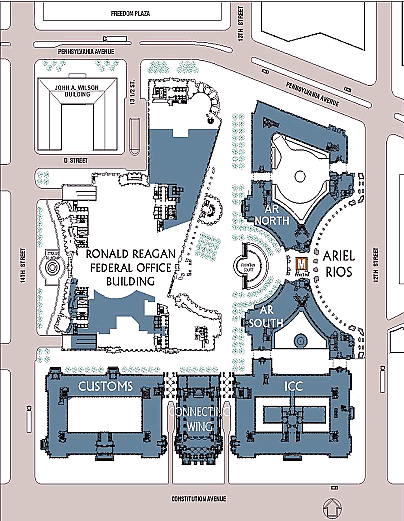Graduate student Justin A. Spenillo is a program analyst in the Sustainable Facilities Practices Branch of the U.S. Environmental Protection Agency, and is currently working on a project at EPA Headquarters in Federal Triangle dealing with urban stormwater runoff and collection. Justin's role in this demonstration project includes supporting the efforts to bring the project from concept to design to reality. Thus far his work has included the development of a multimedia presentation outlining the actual project along with emphasizing its importance to the Washington area. The presentation is intended to be a component of an informational briefing for upper management in the EPA. Additionally, Justin has become facile in his understanding of stormwater management techniques and the linkage between urban development and its effect on the surrounding hydrology. The current project that Justin's team is working on is the Ariel Rios South Courtyard and along Constitution Avenue. They have received approval from the Commision of Fine Arts for the design of these two projects.. Construction is expected to begin in 2004. Below is a summary of the project.
Erosion, urban flooding, sewer overflows, and increased levels of pollutants are just a few of the problems faced by local and regional watersheds as a result of rain. Large amounts of stormwater runoff from heavy rainstorms can lead to major environmental concerns if not properly managed, especially in urban areas with large quantities of concrete and asphalt—materials that prevent water from being naturally absorbed and filtered through soil.
To address urban stormwater concerns and respond to an agreement approved by EPA in December 2001 to protect watersheds in the Chesapeake Bay region, EPA’s Sustainable
Facilities Practice Branch (SFPB) is working with the Office of Water’s Non-Point Source Branch and the General Services Administration to implement Low Impact Development (LID)
strategies at EPA’s Federal Triangle complex in Washington, DC. These efforts will also help EPA meet water conservation goals outlined in Executive Order 13123 by reusing rainwater.
In addition to reducing environmental impacts from urban stormwater runoff, LID offers benefits such as simple integration into existing infrastructure, increased cost-effectiveness, and enhanced aesthetics when compared to more conventional stormwater management systems. The Federal Triangle LID implementation plan uses a multi-faceted approach to achieve a reduction in peak runoff and pollutant loads. EPA’s LID strategy focuses on several of the areas of its Federal Triangle campus. Plans call for the incorporation of native landscaping, coupled with an array of bioretention techniques, including bioretention cells, permeable pavers, and soil amendments designed to filter out pollutants as well as reduce stormwater runoff. In addition, the LID project will offer employees and visitors a first-hand look at some of EPA’s innovative approaches to managing stormwater. EPA hopes that by incorporating LID strategies into its Federal Triangle facilities, it can lower the peak volume and pollutant load of stormwater runoff, thus reducing the environmental impact on the nearby Potomac and Anacostia River Watersheds. As part of the campus’ multi-objective, multi-phased project, EPA plans on showcasing its LID practices—allowing local government, students, and visitors to observe and monitor creative solutions to urban stormwater management.
For more information about LID efforts at EPA’s Federal Triangle complex, visit the project website or contact Justin Spenillo at 202 564-0639.
The Low-Down on LID
LID is a relatively new concept in stormwater management
pioneered in Prince George’s County, Maryland, in the
early 1990s. LID encompasses a variety of innovative site
design techniques aimed at controlling the volume and
quality of stormwater runoff. LID techniques include:
• Bioretention—A soil and plant-based stormwater management system designed to mimic natural hydrological processes.
• Vegetated roof covers—Alternative to impervious rooftops
that uses vegetation to retain and filter stormwater.
• Permeable pavements—Porous pavements that allow
water to seep into the underlying soil, reducing runoff.
• Stormwater cisterns—Large storage tanks used to collect
rainwater, typically paired with rain gutters that used to
connect to storm sewer lines.
• Rain gutter disconnects—Rain gutters that have been disconnected from storm sewer lines, redirecting water into
bioretention systems or cisterns.
article by:
Justin Spenillo


